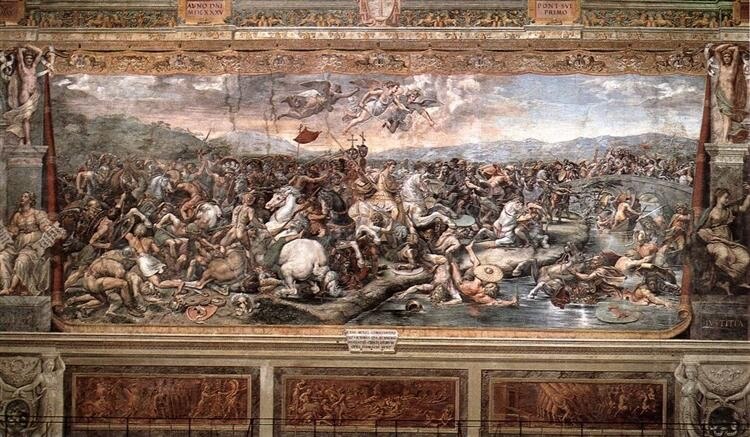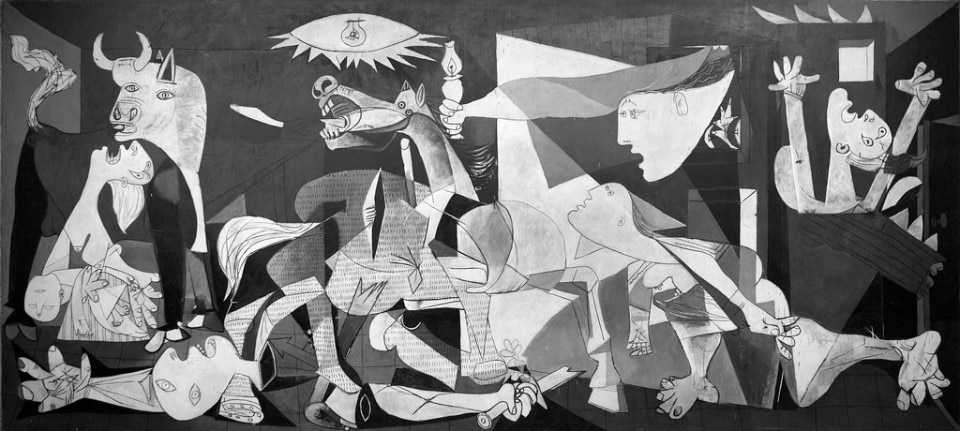Even grammarians have guessed the nature of war: some claim that it is called ‘bellum’ (a fine thing) out of antithesis because there’s nothing good or beautiful about it; war is ‘bellum’ in the same sense in which the Furies are the ‘Eumenides’ (the kindly ones). Others suggest that the word ‘bellum’ derives from ‘bellua’ (beast) because to engage in mutual extermination is for beasts, not men. This is how Erasmus of Rotterdam described war.
The whole world woke up on the morning of 24 February to terrifying news: Vladimir Putin is attacking Ukraine. Shock. Fear.
Over the centuries, art has portrayed wars and battles always for the sake of record-keeping or as a narrative that then took the form of social denunciation. It was an intellectual excuse, therefore, which was almost always in favour of justice and peace.
In 1520, Raphael painted The Battle of the Milvian Bridge in the halls of the Apostolic Palace in the Vatican. This crucial battle was fought in 312 between the Roman Emperor Constantine I and the usurper Maxentius, emperor in Italy and Africa and not recognised by the Tetrarchy. That battle determined the power of Constantine, who after winning became the sole western ruler of the empire, thus ending the tetrarchy and establishing himself as the only Emperor.

The scene is full of characters and movement, and it reads from left to right, with Emperor Constantine appearing triumphant in the centre. A field of bodies fills the fresco. Imposing, strong, muscular bodies of fighters confronting and enveloping each other, giving movement to the entire scene, which the Urbino master chose to describe by giving little space to the architecture and placing it only across the river Tiber, where the tyrant Maxentius died.
What else is war but a collective murder of many and a banditry, all the more criminal, the more it spreads.
As we said before, battles are depicted to stigmatise momentous events in history or as a version of an event in which evil triumphs over good. In modern times, the focus has shifted to denouncing these tragic events, like in Picasso’s Guernica.
On the evening of 26 April 1937, the German Condor Legion bombed the Basque city of Guernica. In this massacre, more than two thousand people died. Picasso’s huge painting is a universal manifesto against the absurd and boorish force of war and a declaration against Francisco Franco with which the artist openly takes a stand for the first time. Black and white are the chosen colours, a monochrome work that tells of atrocities.

In the painting we spot a mother holding a dead child in her arms, a bull, symbolising the offended and desperate Spain, a horse neighing in despair, some women trying to escape, a man engulfed by flames – no one is spared.
Picasso stages a contemporary grisaille that reinterprets the massacre of the innocents in Cubist style. The absence of colours, as well as the scenic layout, expresses the despair. There are many references to ancient painting, where the almost 8-metre-long painting reconstructs an ancient medieval polyptych with a typical triangular scheme. In this work, the vertex corresponds to the wrist of the woman at the centre of the canvas holding the lamp and marking the symmetrical axis supporting the entire work.
A cry of pain – the pain that is upsetting the Ukrainian people and Europe as a whole, a work that is always topical, Guernica, which condemns all wars, just as Raphael’s work condemns tyranny while however exalting its purpose. Erasmus of Rotterdam also wrote: “What else is war but a collective murder of many and a banditry, all the more criminal, the more it spreads”. This war must soon come to an end, and that one man in command must recover his reason even sooner.

